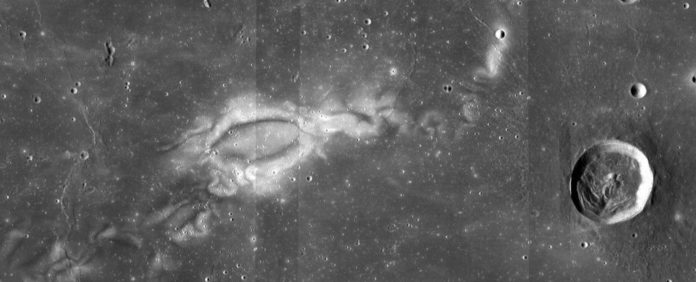Scientists at the Rutgers University in collaboration with the University of California Berkeley have finally uncovered the mystery behind lunar swirls, one of the solar system’s most beautiful optical anomalies. According to scientists, the patterns are caused by subterranean lava tubes.
The lunar swirls and their weird magnetism has been known for a considerable length of time. The Apollo 15 and 16 missions helped outline the sources of magnetism that were connected to the swirls in a paper distributed in 1979.
Sonia Tikoo, coauthor of the study said, “But the cause of those magnetic fields, and thus of the swirls themselves, had long been a mystery. To solve it, we had to find out what kind of geological feature could produce these magnetic fields – and why their magnetism is so powerful.”
Working with what is known about the unpredictable geometry of lunar swirls, and the qualities of the magnetic fields related with them, the analysts created mathematical models for the geological “magnets.” They found that each swirl must stand above a magnetic object that is limited and covered near the moon’s surface.
The picture is consistent with lava tubes, long, narrow structures formed by flowing lava during volcanic eruptions; or with lava dikes, vertical sheets of magma injected into the lunar crust.
Here, another question arises: How could lava tubes and dikes be so strongly magnetic?
The answer lies in a reaction that may be unique to the moon’s environment at the time of those ancient eruptions, over 3 billion years ago.
Previous experiments have suggested that many moon rocks become highly magnetic when heated more than 600 degrees Celsius in an oxygen-free environment. This reaction takes place due to certain minerals break down at high temperatures and release metallic iron.
This doesn’t normally happen on earth, where free-floating oxygen binds with the iron. And it wouldn’t happen today on the moon, where there is no global magnetic field to magnetize the iron.
Tikoo said, “No one had thought about this reaction in terms of explaining these unusually strong magnetic features on the moon. This was the final piece in the puzzle of understanding the magnetism that underlies these lunar swirls.”
The next step would be to actually visit a lunar swirl and study it directly. Tikoo serves on a committee that is proposing a rover mission to do just that.
The study is published in the Journal of Geophysical Research.
